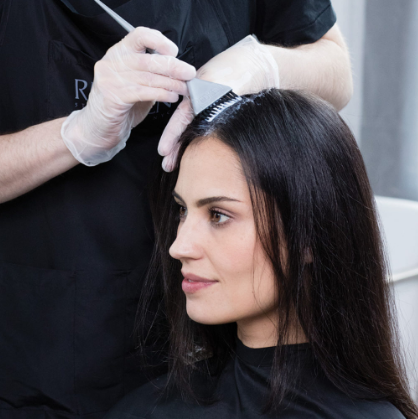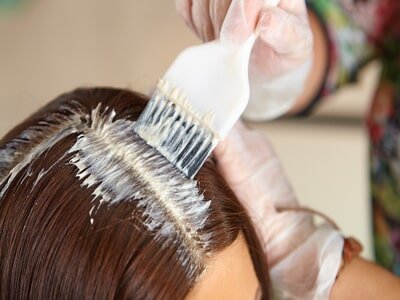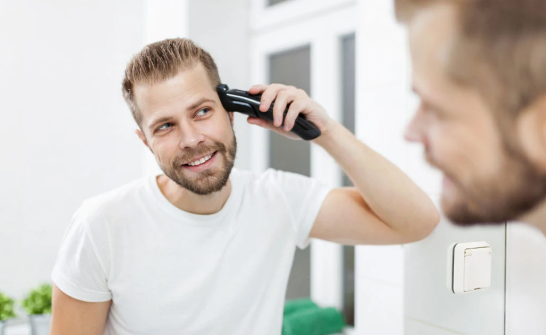All YOU REQUIRE TO KNOW ABOUT HAIR COLORING
With regards to hair, shading assumes a key part. At Rush, we understand what great tone can do: it can improve your hair and lift your certainty ten times. Regardless of whether you need to revive your underlying foundations, change your present shading, or change your shading, take in additional about hair tone from our master. Furthermore, You can visit our Beauty Parlour in Odenplan.
A short history of hair shading
Hair shading is certifiably not a cutting edge wonder; since days of yore, individuals have controlled their characteristic tone to coordinate patterns. Indeed, they had a great deal to play within those days (tragically, the old man would never appreciate mermaid's hair), yet that didn't prevent anybody from applying DIY colors to their scalp. Indeed, hair shading is a relic of times gone by.
Old hair coloring method
The old Egyptians covered silver hair with henna; the old Greeks and Romans utilized plant concentrates to shading their hair. Truth be told, the Greeks, discovering motivation in brilliant haired symbols, for example, Aphrodite, made cruel cleansers like the dye to help hair. The Romans were one of the primary developments to make a lasting dark color; in any case, it was excessively poisonous, so they changed to an equation produced using aged bloodsuckers.
Indeed, the advancement of substance coloring didn't come until some other time. Its starting points return to a serendipitous second in the late nineteenth century when English scientist William Henry Perkin made the previously combined color trying to discover a remedy for intestinal sickness (fun certainty). The shading he made was purple mauve, so Perkins called it purple. His science educator, August Hoffman, created a shading changing particle from a Marjane called paraphenylenediamine or PPD, a synthetic that is still broadly utilized in the industry today.
The innovation of manufactured hair colors
Nonetheless, it required quite a while before manufactured hair colors hit the market. It wasn't until 1907 that French physicist (and organizer of L'Oréal) Eugène Schuller started delivering compound hair colors, which he called Auréole, for business use. After at first offering his items to Parisian salons, Schuller established his organization in 1909, and the rest, as it's been said, is history.
By 1900, hair colors had gotten further developed and held up better; home hair color packs were created and sold around the globe. In 1956, Clairol presented the first step color that helped hair without helping it. What's more, since it was a home color, ladies could color their hair all the more carefully; the Clairol item was an immense achievement and likely likewise helped change perspectives about hair coloring.
The first shame (or rather, secret) related to hair coloring started to scatter. When the new century rolled over, hair shading, as Victoria Sherrow writes in her book Encyclopedia of Hair: A Cultural History, "was viewed as indecent, insolent and to some degree 'crude. By the 1970s, mentalities toward hair had changed, and by the 1980s everybody, even Hollywood stars had become allies of hair tone. On account of superstar supports, full-page promotions, and more extensive scope of accessible tones, hair color turned into a restorative fundamental for people around the globe.
Today, hair shading items keep on making up an enormous level of the magnificence of business' income. With the steady advancement of new items and patterns, there are significantly more chances for colorists to get inventive. Truly, our interminable love of hair shading proceeds with today!
What would it be a good idea for you to know before you begin shading your hair?
Have you ever had a hair shading debacle? Hello, everybody is qualified to have a couple in their lives; you better not hear "shading adjustment" after your adolescent years! Thus, before you go after the closest DIY container of hair color, tune in up: here are our top hair shading tips.
Book an expert discussion with a colorist
While there isn't anything amiss with utilizing home shading packs when you remove the experts from the condition, the danger increments. What's more, on the off chance that you need to change the tone totally, you should leave it in the possession of a certified colorist. If you choose to have your hair shaded in a salon, exploit a free meeting. Significantly, you and your colorist are on the same wavelength - speak the truth about what you need; the cycle may take longer than you might suspect. For instance, in case you're going from brunette to blonde, it's far-fetched that you'll arrive in one meeting. Conversing with a colorist about what you need will assist you with dealing with your assumptions; a 15-minute interview is an ideal chance to choose together on your look, tone, and method, which implies you'll leave with the hair shading you need.
Consider hair care and support
Lamentably, all hair colors blur. There are things you can do to keep your shading treated hair new in the salon longer, yet sooner or later, you'll need to spruce it up. The significant thing to recall is that not all hair colors are equivalent. All in all, some hair tones require more consideration than others.
All in all, light hair is somewhat harder to keep clean, particularly in case you're a brunette. If you need to keep your bleach light hair, you should visit the salon all the more consistently; contingent upon how many blondes you need and your characteristic tone, you should have a root lift each 4 to 12 weeks.
The blanching cycle likewise strips the hair. So be set up to invest some energy-sustaining faded (and parched) twists with veils or molding medicines. Consider how long you're willing to spend on shading upkeep. In case you're the sort to get moving, you might need to pick something simpler to focus on.
Consider what's best for you
Experiencing Pinterest makes it simple to move diverted. Ideally, we would all go with any tone; sadly, there is something else entirely to it than that. Shading is your composition; pick a shade that doesn't exactly measure up for you and you will watch cleaned out. Discover which ones are appropriate for your appearance or converse with a beautician before something contacts your scalp.
You additionally need to consider how your style is reflected in the cut and shading, and whether the shading you need accommodates your way of life (could you wear a dark blue to the workplace, for instance?) and your responsibility. Be your closest companion's bridesmaid? Possibly ocean froth green would work out positively for his shading range (and your dress) first.
Do your examination (and take pictures).
Ashy dark, marshmallow, coffee, ruby combination: the universe of hair tone can be perplexing. Shading language can mean various things to various beauticians; ensure you leave the salon with the shade you truly like by getting it ahead of time. Get motivation from the Internet, make a graph on Pinterest or save a couple of Instagram photographs on your telephone to give your colorist obvious signs once you're in the salon. You can even save pictures of something you don't need (this is particularly helpful if you need a total shading change however aren't certain of the tone).
Apply a hair cover the prior night.
To saturate your hair and set it up appropriately for shading, apply a hair veil the prior night. It's ideal to utilize covers and profound molding medicines at this stage; utilizing a veil quickly a while later can prompt staining. Truth be told, you ought to try not to utilize forceful medicines for half a month in the wake of shading your hair to drag out the tone.






Comments
Post a Comment